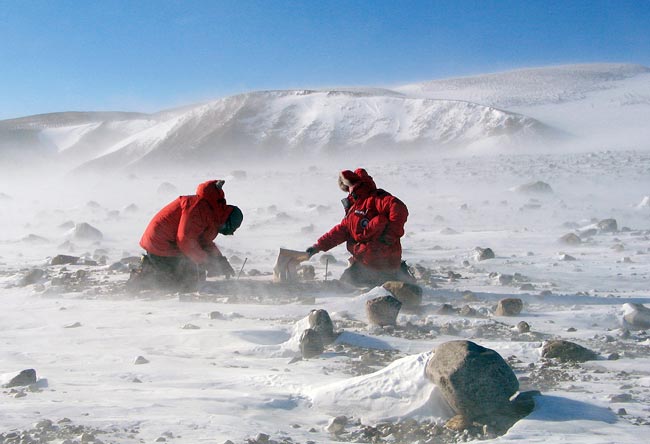Rock Reunites Antarctica and North America

A solitary chunk of granite, small enough to heft in one hand, is key evidence that Australia and parts of Antarctica were once attached to North America, a new study suggests. The Earth's continents are thought to have collided to become supercontinents and broken apart again several times in Earth's 4.5 billion year history. The most recent supercontinent was Pangaea, which began to break apart about 200 million years ago; the landmasses that comprised Pangaea eventually wandered into the current configuration of continents. Several supercontinents predating Pangaea have been proposed by geologists, including one dubbed Rodinia that existed about 1.1 billion years ago. For several decades, researchers have theorized that part of the ancient supercontinent Rodinia broke away from what is now the southwestern United States around 800 million to 600 million years ago, eventually drifting southward to become eastern Antarctica and Australia. The idea is known as the southwestern United States to East Antarctica (SWEAT) hypothesis. But there was little physical evidence that could tie the southernmost continent to the long-disappeared Rodinia. Until scientists stumbled upon this rock, that is. Granite rock belt John Goodge of the University of Minnesota-Duluth and his team were searching in Antarctica's Transantarctic Mountains for rocks carried along by ice rivers that could provide clues to the composition of the underlying crust of Antarctica, which in most places is buried under 2 miles of ice. One rock, found atop the so-called Nimrod Glacier, was later determined to be a very specific form of granite with what Goodge describes as having "a particular type of coarse-grained texture." Chemical tests run on the rock later revealed that it has a chemistry "very similar to a unique belt of igneous rocks in North America" that stretch from California through New Mexico to Kansas, Illinois and eventually New Brunswick and Newfoundland in Canada, Goodge said. This belt of rock was a part of what is called Laurentia, thought by some geologists to be the core of Rodinia. The belt stops suddenly at its western margin, leading geologists to suspect that some piece of crust had rifted away from what is now the West Coast of the United States. "It just ends right where that ancient rift margin is," Goodge said. "And these rocks are basically not found in any other part of the world." That a small chunk of this rock should turn up on a glacier high in the mountains of Antarctica is strong evidence in support of the SWEAT model, the researchers say. "There's no other explanation for how it got where we found it," Goodge said. Biological change At the time that this rift occurred, a massive change in Earth's biota, the Cambrian explosion, was also happening. "During the Cambrian explosion about 520 million years ago we started seeing this huge expansion in the diversity of life forms," Goodge said. Piecing together Rodinia helps provide a geological context in which this diversification occurred. The shifting configuration of landmasses, collisions between them, as well as erosion and the influx of chemicals into the seas may have provided the nutrients for that expanding diversity of lifeforms. "Something helped trigger that big radiation in life," Goodge said. The study, detailed in the July 11 issue of the journal Science, was funded by the National Science Foundation.
- Have There Always Been Continents?
- North vs. South Poles: 10 Wild Differences
- 101 Amazing Earth Facts
Get the world’s most fascinating discoveries delivered straight to your inbox.

Andrea Thompson is an associate editor at Scientific American, where she covers sustainability, energy and the environment. Prior to that, she was a senior writer covering climate science at Climate Central and a reporter and editor at Live Science, where she primarily covered Earth science and the environment. She holds a graduate degree in science health and environmental reporting from New York University, as well as a bachelor of science and and masters of science in atmospheric chemistry from the Georgia Institute of Technology.


